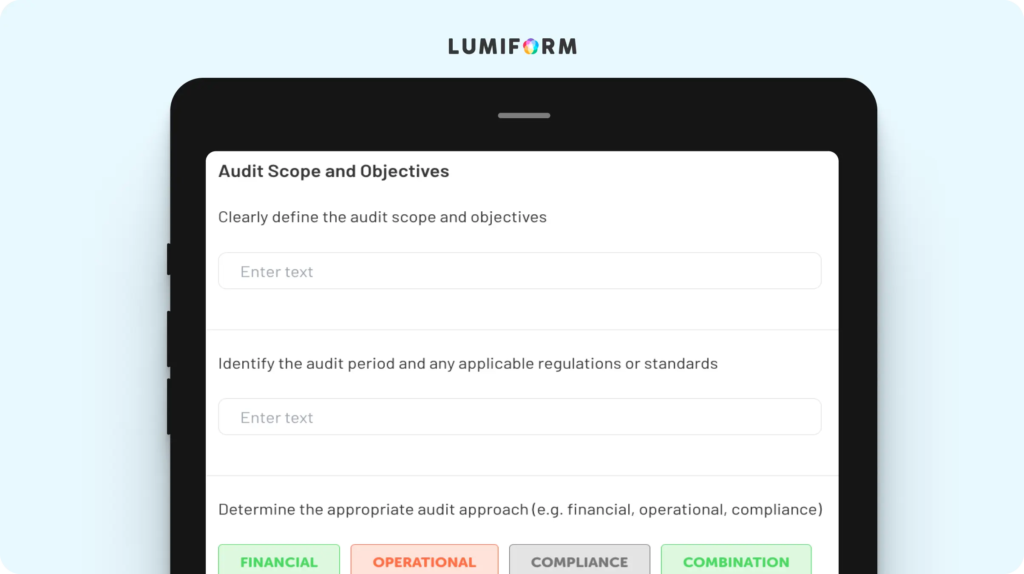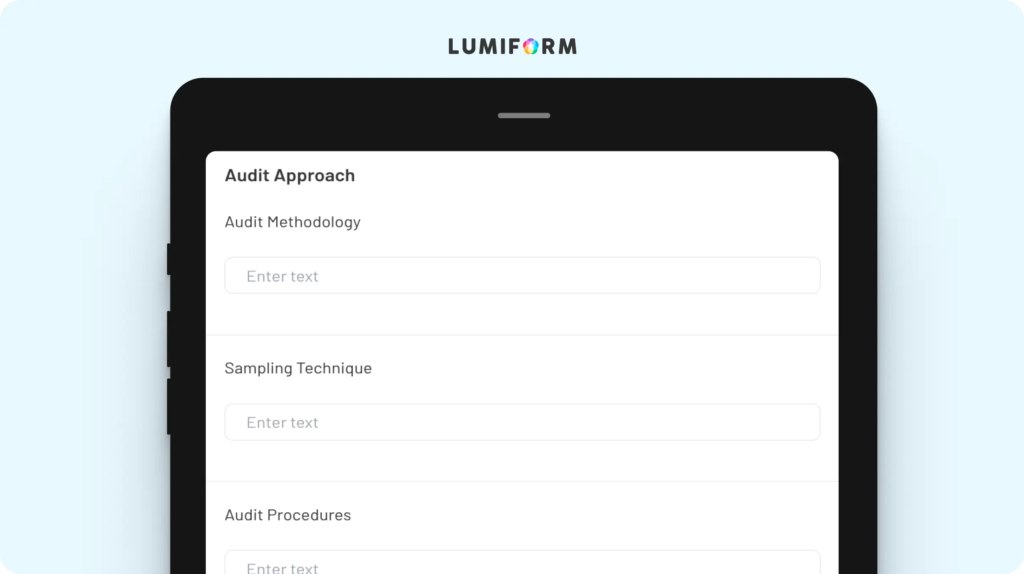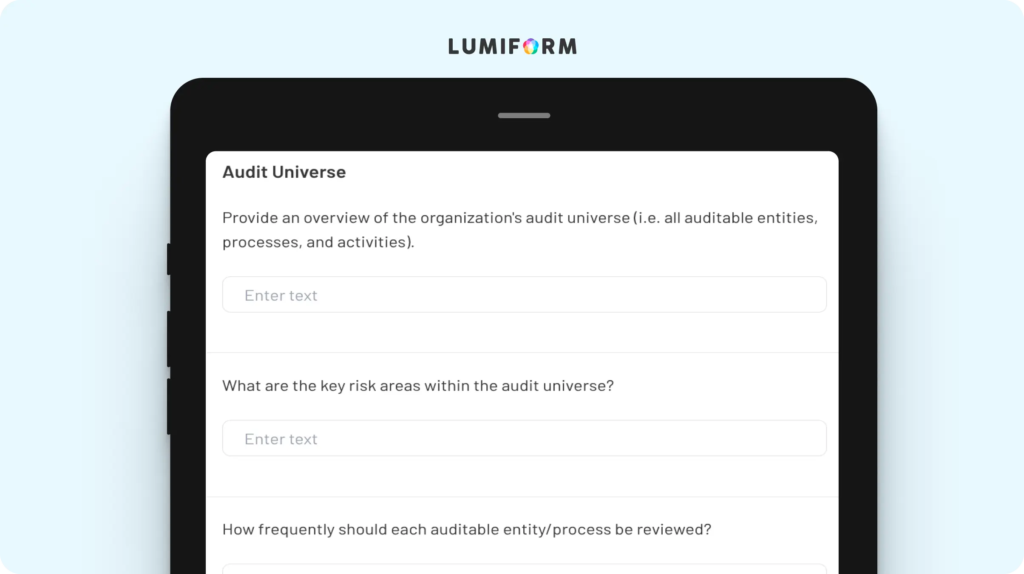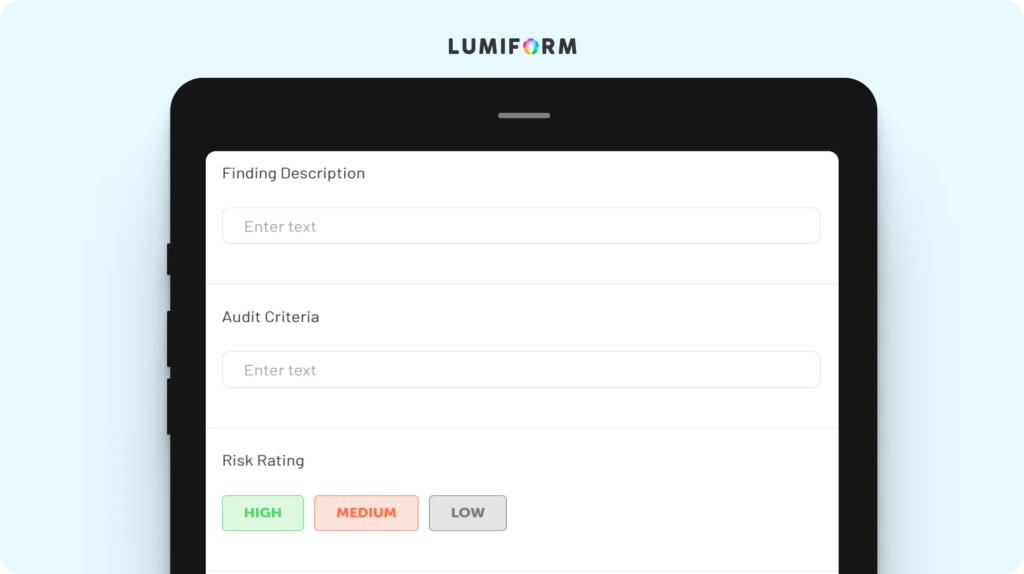Setting up an audit plan involves juggling many tasks and details, along with compliance checks–especially if you’re in an industry where audits are required regularly. An audit plan template helps you stay organized and on track. It enables you to document major steps, assign tasks, and keep your team aligned, all while maintaining rigorous standards.
Without an organized approach, audits can spiral into endless paperwork or even inconsistent records. The audit plan templates below tackle these challenges by giving you a clear framework so you can be consistent with each audit.
Audit plan templates for streamlining compliance
You can download these audit plan templates as PDFs or use them as online forms:
Audit plan template
This audit plan template lays out the end-to-end auditing workflow, from initial planning to final review. With sections for objectives, task assignments, and timelines, it enables teams to maintain focus and follow a structured approach throughout each phase. You can record detailed action steps, set automated reminders, and write down notes for thorough documentation. Adjusting this template to fit your needs is simple—add custom fields for specific regulations, or expand checklist sections for more complex audits.Internal audit plan template
This internal audit plan template brings order to internal assessments by helping you define major audit areas, goals, and assigned roles. It covers risk analysis, task scheduling, and scope of review so you can easily spot areas that need closer inspection. To customize it, you can include specific risk categories or adjust the sections based on your audit depth. This template serves as a structured roadmap so every team member is clear on their role and tasks, keeping audits efficient and on-point.ISO 27001 internal audit plan template
Perfect for managing ISO 27001 compliance, this audit template aligns with the ISO framework’s strict requirements, helping your team assess security controls and meet certification standards. It gives you space to document audit objectives, measure controls, and analyze risks, making the process more systematic. Feel free to add extra fields for your priority areas or focus on certain security protocols to conduct a thorough, relevant audit. This template enables teams to track compliance efforts meticulously, supporting continuous improvement.Internal audit annual plan template
Plan a year of effective internal audits with this template, designed to organize audits for consistent, ongoing oversight. It features sections on audit objectives, the audit universe, and risk assessment, and you’ll also write down a detailed audit plan along with follow-up measures. To customize it, you can include compliance areas specific to department needs. This proactive approach keeps you prepared and focused on continuous improvements and compliance throughout the year.Audit remediation plan template
Designed for post-audit follow-up, this template gives you a structured approach to addressing issues found during audits. You can use it for documenting root cause analysis, tracking corrective actions, and setting timelines for each remediation task, making it easier to follow up on outstanding issues. To fit the plan to your unique challenges, you can add extra sections based on high-priority issues. With this template, you can efficiently manage remediation efforts and keep improvement initiatives on track, creating a solid foundation for your next audit.
How to create an audit plan template on Lumiform
With Lumiform, you can set up your own audit plan template and run audits that are efficient and easy to manage. Start by opening any of the templates above then modifying them with the drag-and-drop form builder. You can add or rearrange fields based on your audit requirements. Feel free to include multiple input types, like text, checkboxes, and signatures for verifications, so you can clearly document each step.
Lumiform’s team collaboration features make it simple to share the template with relevant team members, so everyone’s in the loop from the start. If issues arise, you can assign tasks to specific team members, helping to improve accountability and follow-up on flagged items.
Once the audit wraps up, instantly generate reports that capture key insights. Then save them for future reference, enabling your team to track changes over time and support continuous improvement.





